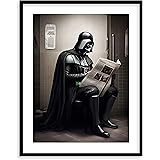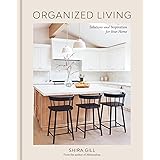Avoiding Common Interior Design Mistakes for a Harmonious Home
Embarking on a home decor journey can be both exciting and daunting. While the vision of a perfectly curated space often fills our minds, the reality can sometimes lead to frustration, wasted resources, and results that fall short of expectations. It’s estimated that a significant portion of homeowners face challenges during their interior design projects, often due to preventable missteps.
The video above expertly highlights some of the most prevalent interior design mistakes that can hinder your progress and budget. This accompanying guide delves deeper into these critical areas, providing expanded insights and actionable strategies to ensure your next decorating endeavor is a resounding success. By understanding and proactively addressing these common pitfalls, you can transform your living spaces into a reflection of your ideal aesthetic and functionality.
The Foundation: Discovering Your Unique Interior Design Style
One of the primary interior design mistakes, as illuminated in the video, is neglecting to define your personal aesthetic. Without a clear understanding of what truly resonates with you, design choices can become scattered, leading to a mismatched and unsatisfying environment. This initial step is paramount for cohesive and intentional decorating.
To pinpoint your unique style, consider creating a digital or physical mood board. Platforms like Pinterest are invaluable for collecting images that evoke feelings of comfort, beauty, or functionality. Pay close attention to recurring themes, colors, textures, and furniture shapes that consistently catch your eye. Furthermore, observe what you dislike, as this can be equally informative in refining your preferences.
It is important to explore various established interior design styles to better articulate your leanings. Perhaps you gravitate towards the clean lines and minimalist approach of Scandinavian design, or the earthy tones and natural materials of a Bohemian aesthetic. Mid-Century Modern, Industrial, Farmhouse, and Traditional each offer distinct characteristics. While your style may evolve over time, and mixing elements from different styles is certainly encouraged, having a foundational understanding provides a crucial starting point for informed decisions.
Mastering the Palette: Selecting the Perfect Paint Color
The video astutely points out the error of choosing paint prematurely. Paint selection should indeed be one of the final design decisions, not the first. The rationale behind this is simple yet profound: it is significantly easier to match paint to your existing or chosen furniture, textiles, and fixed elements than the other way around.
Consider the interplay of various factors when selecting paint. Natural light, for instance, dramatically alters how colors appear throughout the day. A paint swatch that looks vibrant in a brightly lit showroom might appear muted or even dull in a north-facing room with limited natural light. Similarly, artificial lighting, whether warm incandescent or cool LED, will influence the paint’s perceived hue.
Furthermore, understanding undertones is critical. Many paints have subtle undertones—be it blue, green, yellow, or red—that can clash or harmonize with other colors in your space. For instance, a “greige” paint might lean warm with a beige undertone or cool with a grey undertone. Always test paint colors on multiple walls in the room, observing them at different times of day and under various lighting conditions. Painting large swatches or using peel-and-stick samples provides a far more accurate representation than a small chip.
Proportion and Scale: Furnishing Your Space Wisely
A common design error highlighted is acquiring furniture that is either too large or too small for your designated area. The consequence is often a room that feels either cramped and unwelcoming or sparse and uninviting. Achieving proper proportion and scale is fundamental to creating a balanced and functional environment.
Prior to purchasing any new furniture, meticulous measurement of your space is essential. Beyond just the room dimensions, consider the size of doorways, stairwells, and hallways to ensure pieces can be easily maneuvered into place. Subsequently, map out the furniture footprint using masking tape on the floor, as suggested in the video. This technique allows for a tangible visualization of how furniture will fit and, critically, how much space remains for comfortable movement and traffic flow.
Think about the “visual weight” of furniture items. A dark, bulky sofa will inherently feel heavier than a lighter-colored sofa with exposed legs, even if their physical dimensions are similar. Incorporating multi-functional furniture, such as ottomans with storage or sofa beds, can also be a strategic way to maximize smaller spaces without sacrificing style. The goal is to create a sense of balance where each piece complements the overall room without overwhelming or being dwarfed by its surroundings.
Beyond the Basics: Additional Interior Design Blunders to Sidestep
While the video focuses on three core interior design mistakes, several other blunders commonly detract from a home’s aesthetic and functionality. Being aware of these additional pitfalls can further refine your design approach and ensure a polished outcome.
One significant oversight is inadequate lighting design. Relying solely on a single overhead light fixture often results in a flat, uninviting space with harsh shadows. A well-designed room incorporates layers of light: ambient (general illumination), task (for specific activities like reading), and accent (to highlight art or architectural features). Thoughtful placement of lamps and fixtures can dramatically alter the mood and perceived size of a room, avoiding both overly bright and overly dim environments.
Furthermore, neglecting functionality in favor of aesthetics can lead to a beautiful but impractical home. Every item in a space should ideally serve a purpose, even if that purpose is purely decorative. Ensure your layout supports daily activities, your storage solutions are ample, and your furniture pieces are comfortable and durable enough for their intended use. A visually stunning room that is difficult to live in ultimately fails its primary objective.
Another prevalent issue is the accumulation of clutter. Even the most meticulously designed space can quickly lose its appeal when overrun with excessive decorative items, papers, or unused possessions. Implementing smart storage solutions—from built-in shelving to attractive baskets and closed cabinetry—is crucial for maintaining a sense of order. Regularly decluttering helps to preserve visual calm and allows your carefully chosen design elements to truly shine, preventing the common interior design mistakes that make a space feel chaotic.
Finally, a common error is failing to personalize a space, resulting in a generic, “showroom” look. While inspiration from catalogs and online galleries is invaluable, your home should tell your unique story. Incorporate personal touches such as cherished artwork, family photographs, travel souvenirs, or custom pieces. These elements infuse character and warmth, transforming a house into a truly distinctive home that reflects your identity and experiences.











